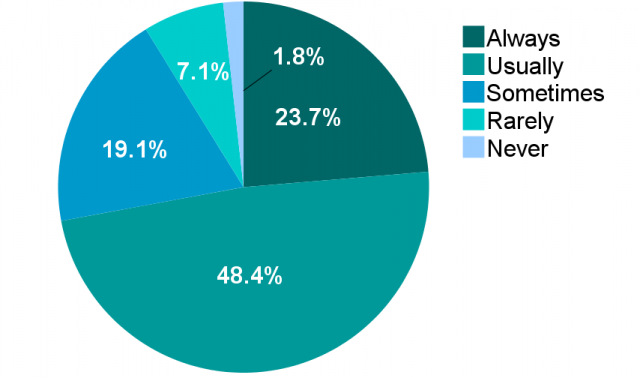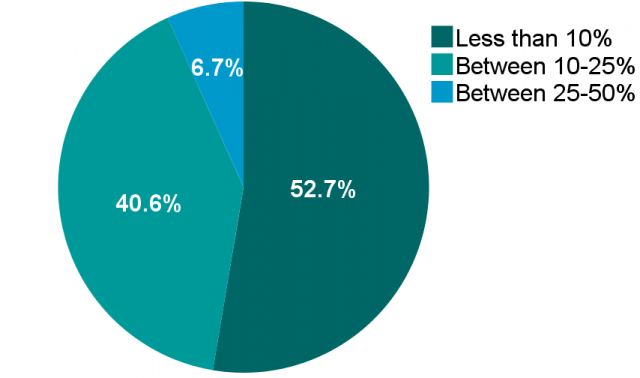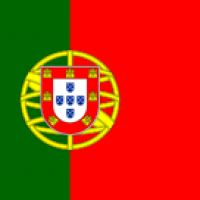Serghides, D. and Kyprianou, I. (2021) Cyprus: cold homes. EP-pedia, ENGAGER COST Action.
Cold homes during the winter period in the policy debate
Thermal comfort in dwellings is not currently being dealt with at a national level in Cyprus. For the winter season, subsidies for heating oil were provided by the government at one time, but this practice ended in 2012, due to the economic crisis affecting Cyprus[1]. Beneficiaries of the subsidies were vulnerable households and individuals residing in remote mountainous areas, where heating energy requirements are especially high. Following particularly harsh weather and intense reaction from remote municipalities concerning the need for assistance, a version of this measure was reintroduced in 2019 when the Republic of Cyprus announced that a small stipend will be provided to residents of specific remote/mountainous areas (Interior, 2019; Kyprianou & Serghides, 2020). The new subsidy was offered only to specific municipalities (above 600m altitude) and was not a heating aid but rather a stipend to alleviate some financial pressure from residents of mountainous regions.
Research on cold homes during the winter period
Although Cyprus experiences a temperate climate with mild winters, research findings indicate that it has one of the highest excess winter death rates (Liddell, Morris, Thomson, & Guiney, 2016). Pignatta et al. (2017) investigated the indoor thermal environment of low-income households in Cyprus and found that the average indoor temperatures in the winter were lower than the accepted limits of the comfort zone for the island (Pignatta et al., 2017). Moreover, Chatzinikola et al. (2015) studied the impact of orientation and glazing on indoor temperatures and energy consumption among low-income dwellings in the Mediterranean region. This study found that the orientation and type of glazing have the potential to considerably influence internal temperatures and the energy performance of these dwellings, and in turn household abilities to maintain a comfortable indoor environment in a sustainable way (Chatzinikola, Serghides, & Santamouris, 2015). A survey (n=283) indicated that approximately 9% of the sample reported rarely or never feeling comfortably warm in their homes during winter (Fig. 1), while almost half of the same sample reported spending more than 10% of their net monthly income on space and water heating (Fig. 1) (Kyprianou & Serghides, 2020).
[1] Article in Greek: http://www.ant1iwo.com/news/oikonomia/article/43007/sto-mikroskopio-oi-perikopes-dhmosiwn-no/


Figure 1. Responses to the question "Do you feel comfortably warm in your home in winter?" (left) and "On average, what percentage of your net monthly income is spent on space and water heating in winter?” (right). From Kyprianou & Serghides, 2019
Chatzinikola, C., Serghides, D., & Santamouris, M. (2015). Effect of the orientation on the winter indoor temperatures and on the energy consumption of low-income dwellings in the Mediterranean region. International Conference with Exhibition S.ARCH - Environment and Architecture, 1–9. Montenegro.
Interior, M. of. (2019). Subsidy scheme for financial aid to support residents of remote areas with an altitude over 600 metres for 2019 (in Greek). Retrieved from http://www.moi.gov.cy/moi/moi.nsf/All/758F97F5073F1C8FC22583D800297DC8?OpenDocument
Kyprianou, I., & Serghides, D. (2020). Dealing with energy poverty in Cyprus–an overview. International Journal of Sustainable Energy, 39(4), 308–320. https://doi.org/10.1080/14786451.2019.1699560
Liddell, C., Morris, C., Thomson, H., & Guiney, C. (2016). Excess winter deaths in 30 European countries 1980-2013: A critical review of methods. Journal of Public Health (United Kingdom), 38(4), 806–814. https://doi.org/10.1093/pubmed/fdv184
Pignatta, G., Chatzinikola, C., Artopoulos, G., Papanicolas, C. N., Serghides, D. K., & Santamouris, M. (2017). Analysis of the indoor thermal quality in low income Cypriot households during winter. Energy and Buildings, 152, 766–775. https://doi.org/10.1016/j.enbuild.2016.11.006

